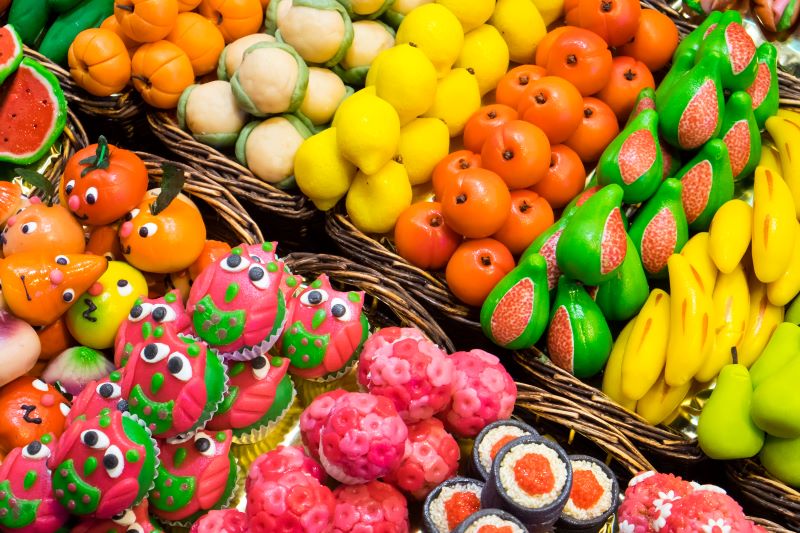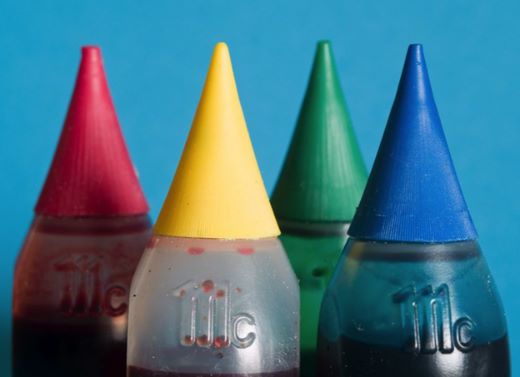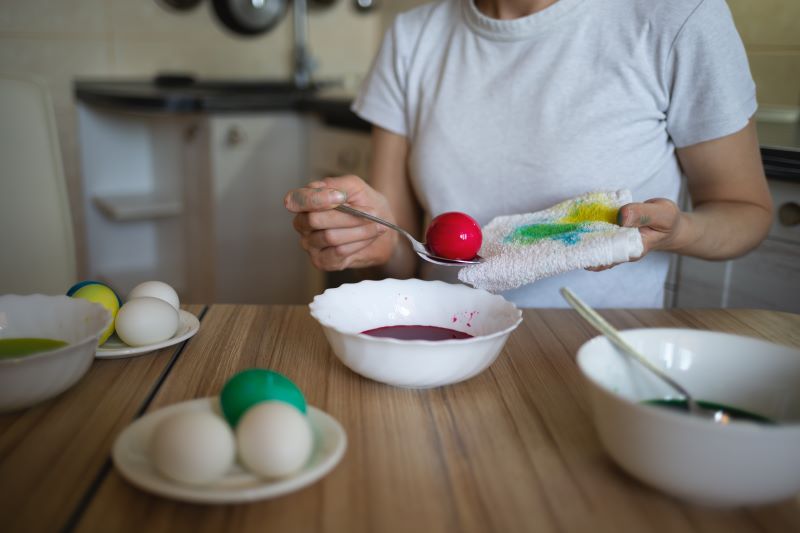Harmful Side Effects of Artificial Food Colours & Diseases Caused

Food lovers worldwide tend to be attracted to eatables that are vibrant in colour. Additionally, convincing your kids to eat healthy meals becomes more manageable if a food item is colourful.
Numerous edible food colours are available in the market for this purpose. However, some of them can cause severe diseases.
Keep on reading to know which diseases are caused by artificial food colours.

Table of Contents

What are Artificial Food Colours?

Artificial colours are chemical substances that enhance foods’ colour and appearance. The usage of food dye is increasing and becoming an integral part of the food industry. However, studies prove most of them are harmful to human health in the long run.
Synthetic food colouring, also known as artificial food colouring, is a man-made substance that has been thoroughly regulated for safety and effectiveness. It is used extensively in the food industry to give various products bright colours that make them appealing to customers. Despite concerns about its safety, it presents no danger when used as directed.
Where are Artificial Colours Used?
Artificial dyes are among the most common additives in various industries, helping improve a product's appearance and appeal. Here’s a quick rundown of applications where artificial colours are typically found.
- Food and Beverages: Candy, desserts, cookies, snack bars, cereals, and soda pop or fruit juices are available.
- Cosmetics: These are used in makeup products, skincare items such as creams or lotions, hair dyes, and nail polishes.
- Pharmaceuticals: For identification or aesthetics, they can be found in medications, vitamins or supplements.
- Household Products: Surface cleaners, laundry detergents, and pet products may all contain pigments to improve their appearance or differentiate between brands.
Is Food Colouring Bad for Health?

Although the FDA (Food and Drug Administration) control its application, there are concerns that they may cause hyperactivity, allergies, or cancer. However, according to them, it is within safe levels. Nevertheless, some customers prefer substitutes made from natural ingredients to minimise probable health risks.
However, scientific research has yet to prove anything specific about its safety. The quantities of these substances in foods are hardly harmful if any at all. Natural alternatives from plants and vegetables are gaining popularity for those seeking to avoid synthetic additives.
In summary, though most people regard artificial colours as harmless if used as prescribed, an individual may decide otherwise depending on one’s preference and health condition.
Which Diseases Do Artificial Food Colours Cause?
Followings are the diseases that artificial colours can cause you, especially the synthetic ones -
- Cancer: Some primary food dyes contain benzene, which is known as a carcinogen. In addition, several other contaminants are present in edible dyes. Most studies show that these substances result in cancer and tumours.
- ADHD (Attention Deficit Hyperactivity Disorder): It is still controversial that artificial food colouring causes ADHD. Nevertheless, most studies say that synthetic food dyes have a high probability of causing ADHD.
- Allergies: Many instances proved that artificial food colourings cause allergies. For example, many studies prove tartrazine, a yellow dye, to be a cause of asthma and hives.
Who is at Risk of Diseases due to Artificial Food Colours?
Although used extensively in the food industry, there are concerns over potential health hazards associated with synthetic colours. Specific categories may be more at risk from these dangers, including:
- Children: Especially those who have ADHD or behavioural disorders.
- People with Allergies: Individuals having allergies to certain artificial dyes.
- Asthmatic Persons: Some will find that particular artificial colours worsen their symptoms.
- Sensitive People: People who do not tolerate food additives might have adverse reactions.
- Cancer Patients: Some treatments may require avoidance of specific additives.
Useful Tools to Track Your Health
Preventive Measures to Avoid Diseases Caused by Artificial Food Colours
Consider the following preventive measures to mitigate the potential health risks associated with artificial food colours:
- Read Labels: Carefully review ingredient lists, and avoid buying products that contain such colours; instead, look for natural substitutes.
- Choose Whole Foods: Consider fruits, vegetables, and whole grains, which are rarely processed and rarely feature artificial colours.
- Select Natural Alternatives: Look for products dyed with plant-based sources rather than synthetic additives.
- Cook at Home: Make your meals using fresh ingredients instead of processed items because it gives you more control over your body.
- Educate Yourself: Stay current on the potential hazards of artificial colouring agents so that you can make good eating decisions.
- Monitor Reactions: If there are any unpleasant effects after taking food coloured, artificially keep off them if possible.
- Consult Healthcare Providers: Be sure to seek guidance from healthcare experts, particularly if you are allergic or asthmatic.
Side Effects of Artificial Food Colours
Various side effects are associated with artificial food dyes, which abound in processed foods and raise safety concerns. The following are some possible side effects of consuming artificial food colours.
- Hyperactivity: Children’s intake of artificial colours is mainly linked to increased hyperactivity and problem behaviours.
- Allergic Reactions: People may experience allergic reactions, such as mild itching or hives when they consume certain artificial-coloured foods.
- Asthma Exacerbation: Asthma sufferers have noticed that specific dye substances can worsen asthma symptoms or worsen the condition.
- Gastrointestinal Distress: Few persons might experience digestive problems like nausea, vomiting or diarrhoea after consuming colour-rich food.
- Migraine Headaches: There are people for whom synthetic colours cause migraine headaches, which end up being very severe and uncomfortable.
- Cancer Risk: Several studies hint at a probable link between particular artificial colour additives and cancer, mainly for long-term exposure.
What are Food Dyes?
Food dyes are substances that serve the purpose of adding colour to food and drinks. They can be synthetic or natural, with the former encompassing elements such as minerals, plants or insects, while the latter includes products like beetroot and turmeric.
Other common artificial types used are FD&C Red No. 40, Yellow No. 5, Blue No. 1, and Green No. 3. The food industry uses these colourants to improve product appearance and appeal to its customers visually.
Types of Dyes Currently Used in Food?
Since synthetic dyes are toxic to health, India’s Food Safety and Standards Authority set specific regulations. Therefore, the food dye must meet the required specifications as per the regulation.
Accordingly, manufacturers use natural and synthetic dyes in the food industry to add artificial colour.
Natural Food Colours
Natural edible colours usually need to be more vibrant and healthier. Manufacturers extract the substance from natural elements like vegetables, flowers, and minerals. Sometimes, the source can be fruits, seeds, herbs, algae, and insects. Some of the colours are as follows:
Anthocyanins in raspberries, red cabbages, and beetroots can provide red, blue, and violet colours.
Manufacturers use tomatoes, carrots, and apricot carotenoids to derive red, yellow, and orange food colours.
Chlorophylls in green vegetables are helpful to manufacture green colourants.
Synthetic Food Colours
Manufacturers create these types of edible colourants with the help of chemical reactions. They involve various minerals and petroleum in the making process. The most commonly used synthetic colours are as follows:
Sunset Yellow
Quinolone yellow
Amaranth
Tartrazine
Brilliant blue
Indigo Armine
Allura red
Protect What Matters - Explore Other Insurance Options














